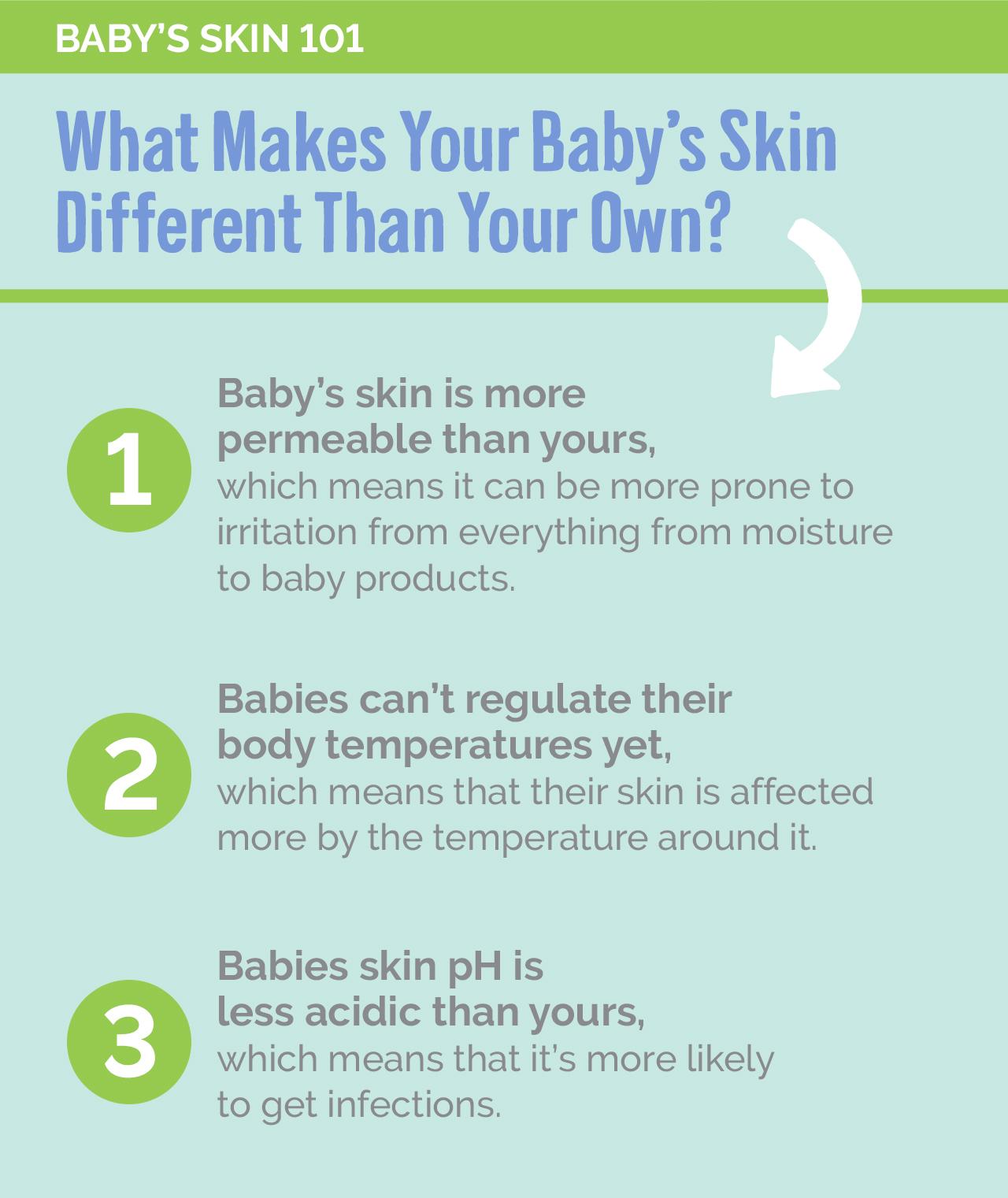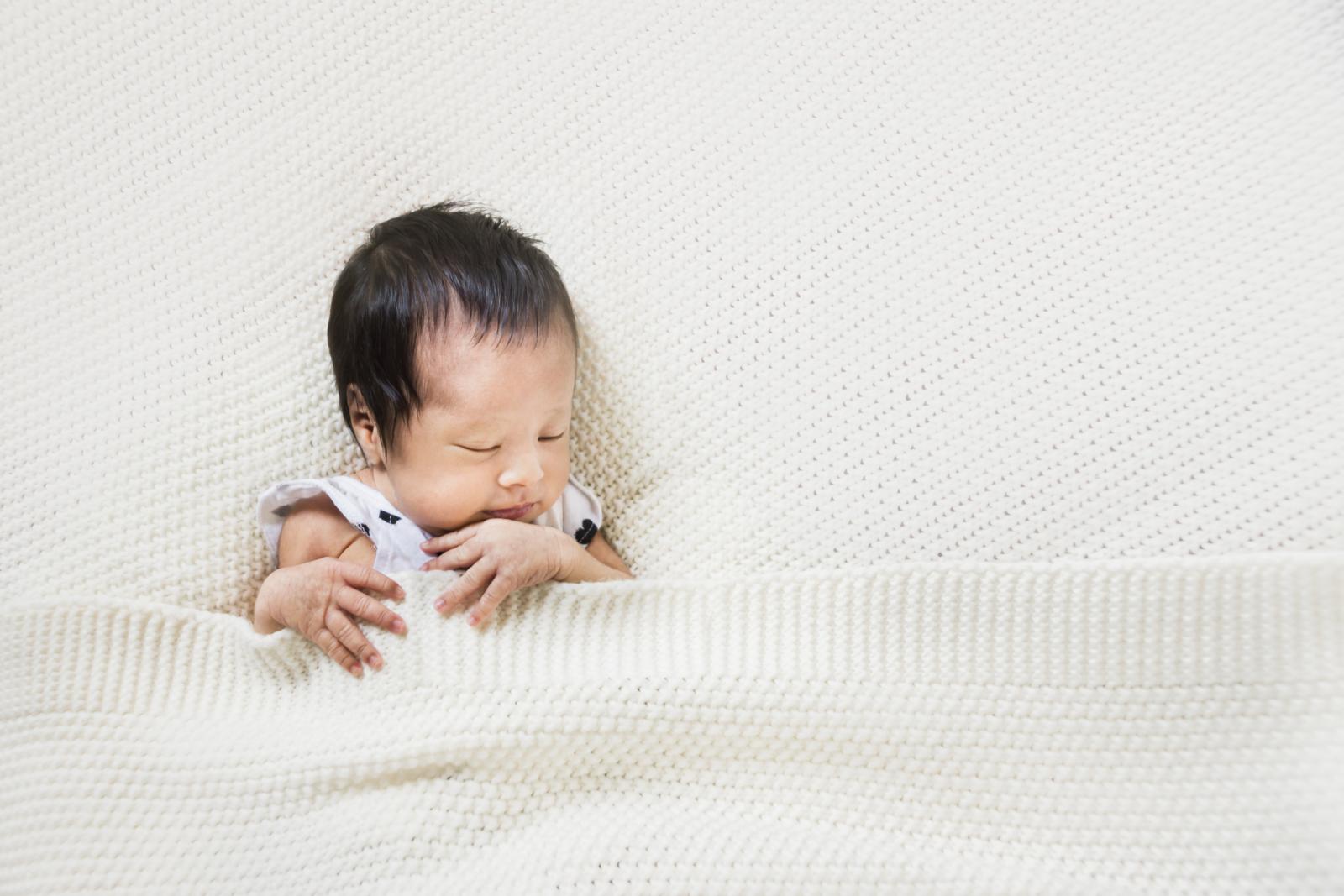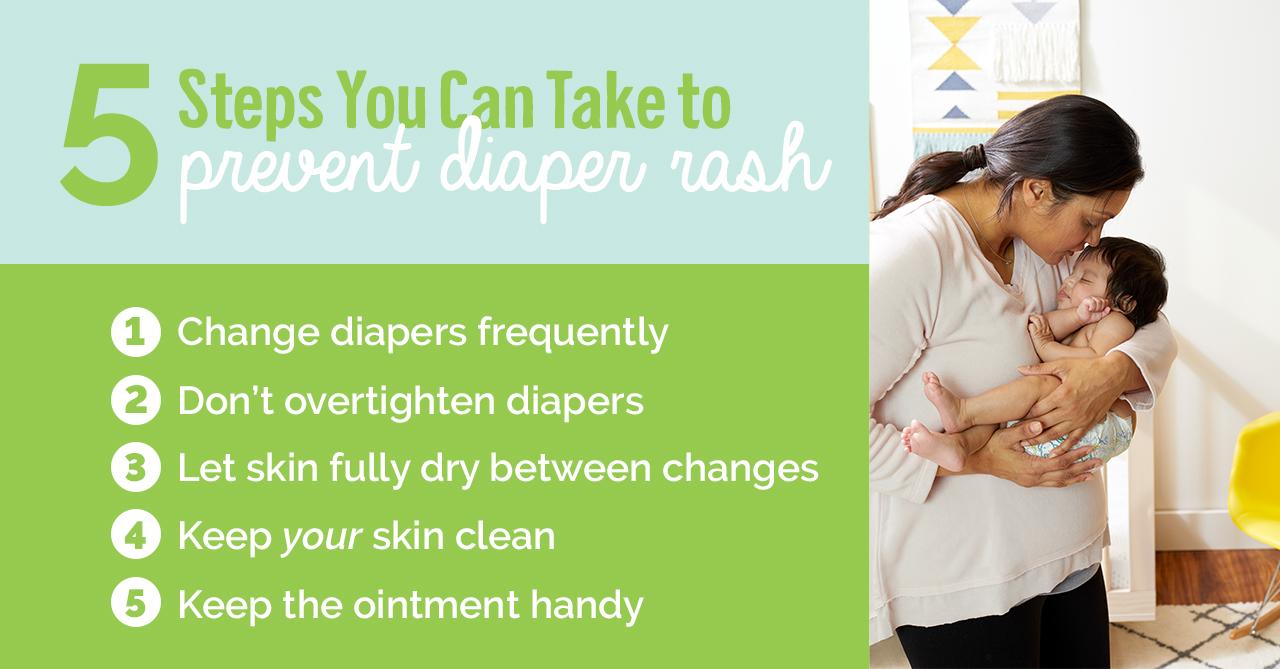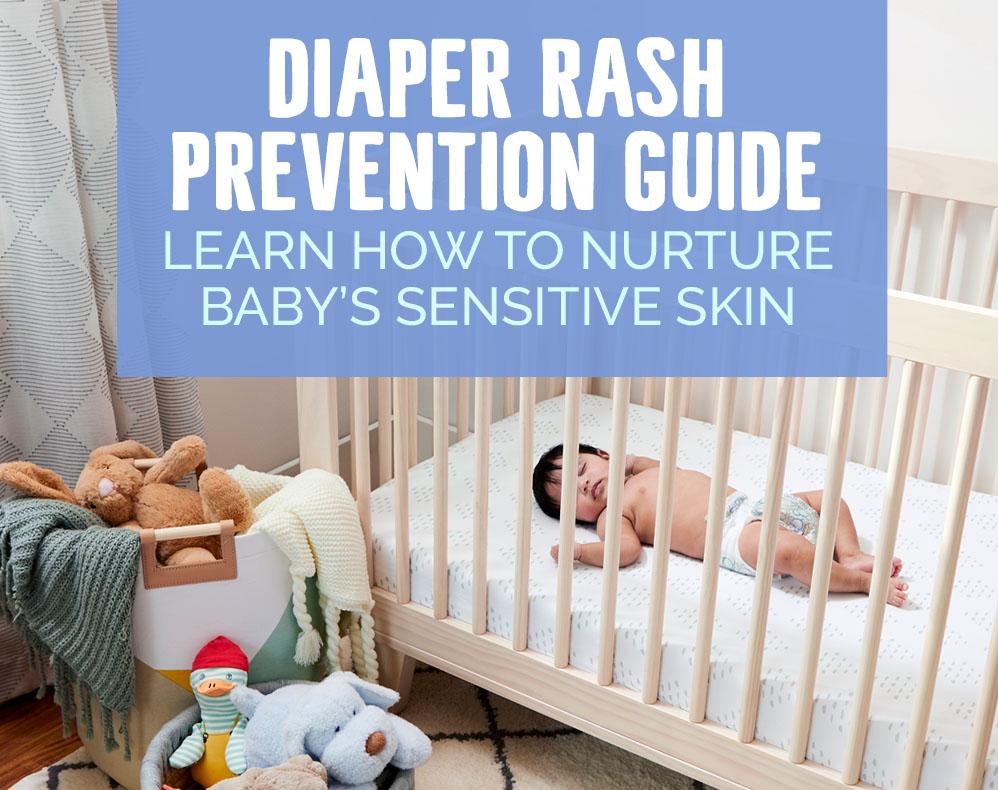Whether you’re expecting a little one or home with your baby, chances are you’re already familiar with diaper rash. There’s lots of information out there, especially about what to do once you run into the issue. But what causes diaper rash? And most importantly—what can you do to help prevent it?
The easiest way to tackle diaper rash is to stop it before if it happens. Prevention is key, and we’re here to help. Before we get into it, though, let’s talk about your baby’s skin.

Baby skin is revered for its velvety softness, which makes it perfect for snuggling and cooing over. But anyone who spends time with a newborn has likely noticed that baby skin is actually pretty sensitive and can be more prone to rashes, infection, acne, and blemishes than adult Skin.1 Learning a bit about your baby’s skin is a good first step to caring for it. Here’s our cheat sheet to get you started, but if you want to go even deeper, check out our full baby skin overview.
-
Baby skin is more permeable than yours2, which means that substances pass through it more easily, including the ingredients in baby products.
-
Baby skin doesn’t hold moisture as well as yours3, which means that in spite of the old saying about a baby’s bum, baby skin is actually pretty dry.
-
Baby skin pH is less acidic than yours, which means that it’s more likely to get infections.4
-
Baby skin has less melanin than yours, which means that it’s more sensitive to the sun’s ultraviolet rays.
-
Babies can’t regulate their body temperatures yet, which means that their skin is affected more by the temperature around it.

As a new parent, don’t let diaper rash catch you by surprise. It’s not fun to open up your baby’s diaper one day and—whoa! Characterized by bright red patches on and around your baby’s most sensitive parts, diaper rash can look a bit scary at times, not to mention make your baby awfully uncomfortable and cranky. There are also different kinds of diaper rash, and a variety of factors can contribute to causing it, including5:
-
Infrequent diaper changes
-
Reaction to a new product
-
Diapers or clothing that are too tight
-
Bacterial infection
-
The introduction of new foods
-
The use of antibiotics
To stay on top of things, here are some proactive steps that can help prevent your close encounters with diaper rash:

-
Embrace that birthday suit—You’ve heard it before, but it’s true. Letting babies go naked is not only adorable, it allows their skin to fully dry out after a change.
-
Change diapers frequently—Reducing moisture on the skin is among the most effective ways to cut down on diaper rash, so keep the changing table and diaper bag well stocked.
-
Rinse with warm water—Giving your baby’s bum a quick warm-water rinse is a great way to keep skin clean. Just remember to make sure your baby’s skin is dry before you put on a new diaper.
-
Pat, don’t rub, to dry the skin—Rubbing is more likely to cause irritation.
-
Don’t overtighten diapers—Though it’s tempting to make those diapers extra snug to avoid blow-outs, diapers that are too tight restrict air flow and can lead to skin chafing.
-
Keep the ointment handy—If your baby is prone to diaper rash, consider a skin-protecting layer of ointment to give it a moisture barrier.
-
Keep your skin clean—Washing your own hands before and after a change is a great way to cut down on bacterial exposure for you and your baby.
-
Ask your doctor—If you encounter long-lasting or overly-frequent diaper rashes, check in with your doctor.
-
Certain diapers can cause the rash—Moisture levels and how often you change your baby are bigger factors than whether you use cloth or disposable diapers.
-
Wipes irritate a baby’s skin—Baby skin can react to both the texture of and ingredients in baby wipes—but not always in a bad way. Take a look at your baby wipes and read to see if they have listed ingredients, so you know what you are using on your baby’s skin.
-
Powdering the bum helps—Though powder was the standard for past generations, according to the Mayo Clinic, doctors are nudging parents away from using powders because they can inadvertently be inhaled and potentially irritate your baby’s lungs.
As the saying goes, the road to diaper rash is paved with good intentions, and in spite of your best efforts—your baby will almost certainly bump into a diaper rash at some point.6 Our advice? Practice prevention tips, trust your common sense, and trade stories with other parents at the playground for solidarity.
1 https://www.webmd.com/parenting/baby/skin-care-tips#1
2 https://www.ncbi.nlm.nih.gov/pubmed/11358544/
3 https://www.seventhgeneration.com/raising-kids/what-you-need-know-about-your-babys-skin
4 https://www.seventhgeneration.com/raising-kids/what-you-need-know-about-your-babys-skin
5 https://www.mayoclinic.org/diseases-conditions/diaper-rash/symptoms-causes/syc-20371636
6 https://www.webmd.com/parenting/diaper-rash-treatment#1



